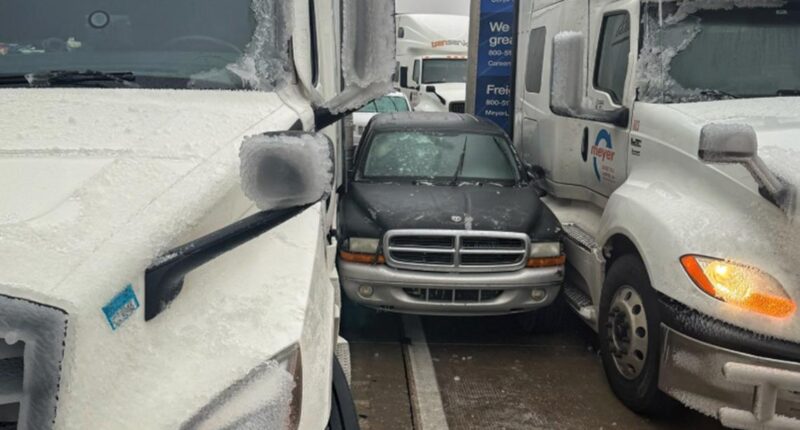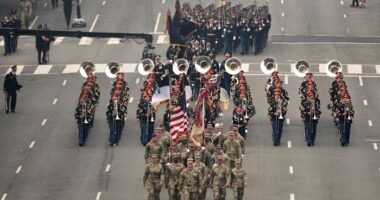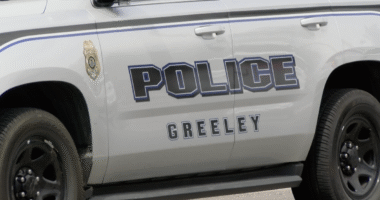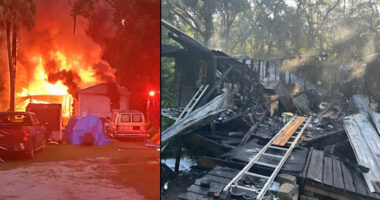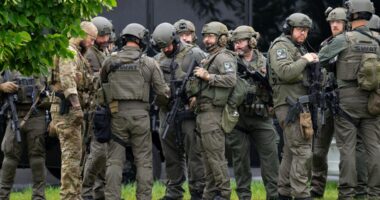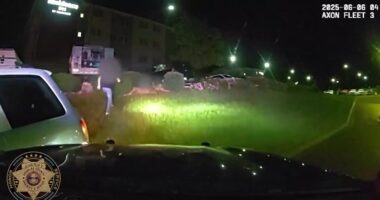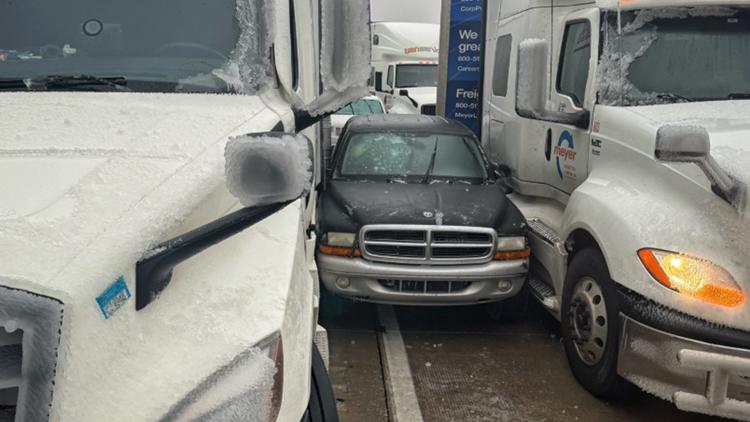
Forecasts say a mix of snow, ice and plunging temperatures are set to spread across the USA in the coming days.
Road conditions in the central U.S. were deteriorating on Saturday due to a winter storm that was bringing a mixture of snow, ice, and dropping temperatures. The forecast predicted that this hazardous combination would move eastward in the upcoming days.
“Winter returned,” said Bob Oravec, lead forecaster at the National Weather Service in College Park, Maryland.
The polar vortex, a system of extremely cold air, is typically confined to the North Pole region where it circulates. However, at times it can break free or extend towards the U.S., Europe, or Asia, resulting in severe cold weather conditions impacting a large number of people.
Studies show a fast-warming Arctic gets some of the blame for the increase in polar vortex stretching or wandering.
Snow and ice are in the forecast
By Saturday evening, significant snowfall was expected in areas spanning from central Kansas to Indiana, particularly along and north of Interstate 70. Forecasts indicated a high likelihood of receiving at least 8 inches (20 centimeters) of snow in these regions. Sections of the interstate in central Kansas had already been shut down by the afternoon due to the weather conditions.
The storm was forecast to move then into the Ohio Valley, with severe travel disruptions expected. It will reach the Mid-Atlantic states on Sunday into Monday, with a hard freeze even expected as far south as Florida.
Severe thunderstorms, with the possibility of tornadoes and hail, were also possible ahead of the storm system’s cold front as it crosses the Lower Mississippi Valley, the National Weather Service warned.
Car wrecks start as storm hits
A fire truck, several tractor-trailers and passenger vehicles overturned west of Salina, Kansas. Rigs also jackknifed and went into ditches, state Highway Patrol Trooper Ben Gardner said.
He posted a video showing his boots sliding across the highway blacktop like an ice-skating rink.
“We are in it now,” Gardner said as he drove to the scene of an accident. Online, he begged for prayers and warned that some roadways were nearly impassable.
Freezing rain in Wichita, Kansas, sent authorities to multiple crashes in the morning, and police urged drivers to stay home if possible and watch out for emergency vehicles.
Governors in neighboring Missouri and nearby Arkansas declared states of emergency. Whiteout conditions threatened to make driving dangerous to impossible, forecasters warned, and heighten the risk of becoming stranded.
Getting ready to ride out the storm
Stores in Wichita were filled with shoppers stocking up on groceries in advance of the storm, and warming centers opened in churches and libraries.
Several businesses closed across the Kansas City area, and the school district in suburban Independence, Missouri, said it might need to cancel classes for one or more days.
“Get where you’re going now & stay put. If you must travel, consider packing a bag & staying where you’re headed,” the Missouri Department of Transportation said in a message on the social platform X.
The agency warned Friday that a shortage of workers could hamper the ability to clear roads.
In Columbus, Ohio, crews treated major roadways with anti-icing liquids.
“It will be a major headache,” said Tom Kines, a senior meteorologist with AccuWeather. “The storm not only has the snow threat to it but the ice threat.”
Power outages could be significant particularly south of the Kansas City area, Kines said.
Temperatures dip but no records break
Starting Monday the eastern two-thirds of the country will experience dangerous, bone-chilling cold and wind chills, forecasters said. Temperatures could be 12 to 25 degrees (7 to 14 degrees Celsius) below normal as the polar vortex stretches down from the high Arctic.
In Chicago on Saturday, temperatures hovered in the teens (minus 7-10 Celsius) and around zero in Minneapolis (minus 18 C), while dropping to 14 below (minus 25 C) in International Falls, Minnesota, on the Canadian border.
Disruptions extend southward
Virginia Gov. Glenn Youngkin declared a state of emergency Friday evening ahead of the storm and noted it could impact people’s ability to vote in the state’s special elections Tuesday. In a statement on X, he encouraged residents to vote early on Saturday before the bad weather arrives.
A similar declaration was issued in Maryland, where officials in the historic state capital near the Chesapeake Bay asked residents to remove vehicles from emergency snow routes. Annapolis also announced plans to open several garages Sunday for free parking.
The National Weather Service predicted 8 to 12 inches (about 20 to 30 centimeters) of snow for the Annapolis area, with temperatures remaining below freezing throughout the weekend.
In Baltimore, an extreme weather alert was issued instructing agencies to provide shelter and assistance for those in need. City officials said wind chills were expected to dip to 13 degrees Fahrenheit (-10.56 degrees Celsius) overnight Saturday and remain in the teens through Tuesday.
In Louisiana, crews were racing to find a manatee that was spotted in Lake Pontchartrain before the cold temperatures hit. The manatee was first seen New Year’s Eve in the Mandeville area.
While manatees are common in the area during the summer, winter sightings are a concern since they can begin to experience cold stress symptoms when the temperature falls below 68 degrees (20 Celsius).
“We are doing everything we can to get our hands on this animal,” said Gabriella Harlamert, stranding and rehab coordinator for Audubon Aquarium Rescue in New Orleans.
Read more of AP’s climate coverage at
Hollingsworth is reporting from Mission, Kansas, and Witte in Annapolis, Maryland. Andrew DeMillo reported from Little Rock, Arkansas.
